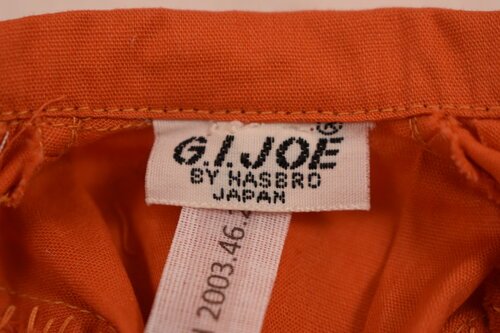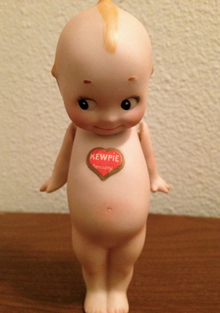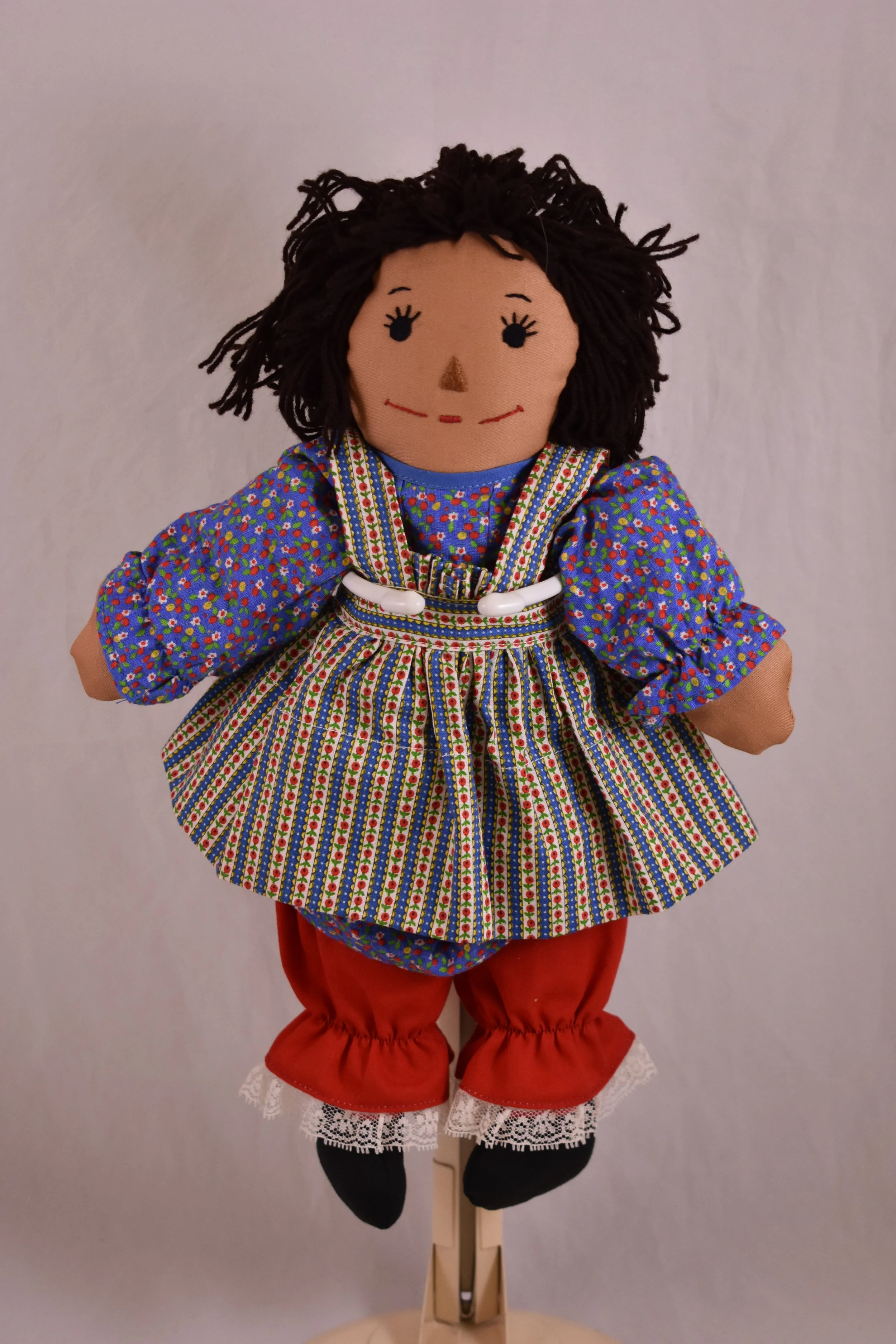The Uncanny Valley
Pop Culture & Promo Dolls
Pop culture and promotional dolls are often one and the same thing. Eaton’s Beauty dolls were both popular and a good marketing scheme for Eaton's. Kids have always loved dolls made to look like their favourite movie or TV characters, but they also make money for the manufacturers. Some dolls are flash in the pan fads, that come and then fade away; good ideas at the right time. Barbie started as a fad, and never went away. The doll launched a multi-million dollar industry of fashion dolls that spans the globe.
Barbie
Barbie was the creation of Ruth Handler, who modelled the doll after the German Billi doll, who in turn was modelled after a comic strip character. The company she founded, Mattel, is still in business today. Barbie has been associated with promoting an unrealistic body image for girls, vapid moral standards, and for showing a lack of diversity. In recent decades the company has tried to improve this image by expanding to a multi-cultural Barbie roster, and by developing a line of female role models, called Sheroes. The Sheroes feature women like Frida Kahlo, Amelia Earhart, and a number of other successful women from around the world.
Many do not know that Barbie has a written back story. In the 1960s, Random House published a series of novels featuring Barbara Millicent Roberts, from Willows, Wisconsin. Her parents’ names are George and Margaret and her boyfriend is, of course, Ken Carson.
Character Dolls
Character dolls are dolls that are modelled after real people, characters from movies or TV, or dolls with faces that show a lot of character. Perhaps one of the earliest successes in this category was Shirley Temple. Shirley Temple was a wildly popular child actor during the Depression years. The doll was produced by Reliable and a number of composition versions were made, each doll sure to feature Shirley’s signature ringlets and dimples. Other early favourite character dolls were Olympic skater, Barbara Ann Scott, The Dionne Quintuplets, and Anne Shirley. Now, almost any popular tv or movie character is made into a doll.
One successful character doll maker was Madame Alexander. She began her doll company in 1923, creating dolls modeled after famous characters, and the company is still going strong. She was the first to create a doll based on a licensed character, namely, Scarlett O’Hara.
The Flying Nun was a short-lived tv show (1967-1970), starring Sally Field as a nun who flew around with the wind in her habit, solving problems for the Sisters of Bertrille.
Shirley Temple dolls, made by Reliable
Buffy and Mrs. Beasley, from the 1966– 1971 TV show, Family Affiar, starring Brian Keith and Sebastian Cabot, and Anissa Jones, as Buffy.
Buffy was never without her beloved doll, Mrs. Beasley. The talking Buffy doll makes numerous references to Mrs. Beasley.
The Mary Poppins Doll was produced for the fans of the famous movie, Mary Poppins, starring Dick Van Dyke and Julie Andrews in 1964. She came complete with umbrella.
Mary Poppin's umbrella, bag and walking cane.
G.I. Joe
This G.I. Joe was made by Mattel. The hat says “Made in Canada”, the torso, “Made in Malaysia” and the clothing, “Made in Japan”.
G.I. Joe made by Mattel
Mattel trademark
Hat made in Canada
Clothing made in Japan
Fad Dolls
Cupcake Dolls
Cupcake Dolls were popular in the 1980s. Made by Tonka, they were scented, wore plastic skirts that, when inverted, created a cupcake shaped doll holder. The dolls had hats that made the cupcake icing.
Flatsy
Flatsy Dolls were..... Flat. They were popular in the late 1960s and early 1970s, made by Reliable. They wore ‘mod’ clothes and featured long, brightly coloured hair, that went to their feet. They were flat and had wire inserts that made them pose-able. Their theme song, and tag line included “Flatsies. They’re flat, and that’s that!”
Kewpie Dolls
Kewpie dolls were the brain child of American, Rose O’Neill. The doll was preceded by its in- spiration; a comic first published in the Ladies Home Journal in 1909, the same year Mackin House was built. They were named after Cupid, the Roman love god, and Rose O’Neill wanted them to be "a sort of little round fairy whose one idea is to teach people to be merry and kind at the same time.” In time, Cupid was shortened to Kewpie. The first Kewpie dolls were made in Germany by the J.D. Kestner Company, then in the USA, made of composition and celluloid. Rose O’Neill made a fortune on the fad dolls, that were used for advertising and promotion of numerous household goods.
This Kewpie doll belonged to Edith Lilian Bowman (1920-2016), along with her grandmother and sisters. Edith lived in Coquitlam from 1955 to 2015. Edith’s daughter thinks the doll may have been won as a carnival prize. This one was likely made in Japan and may be celluloid, a popular material from the era this doll came from, circa 1930s.
An original German Kewpie doll with heart sticker Image source: Wikimedia Commons
Edith Bowman's Kewpie doll
Edith's Kewpie doll had blue (Cupid) wings
Holly Hobbie Dolls
Below are two quintessential Holly Hobbie dolls. Holly Hobbie dolls were created by Denise Holly (nee Ulinskas) Hobbie, an American artist. She began by selling watercolours of the character, and it was later made into a doll that was very popular in the 1970s and beyond. Originally a rag doll, Holly Hobbies morphed into this popular style. The stamp on the back of this doll tells it all.
Cabbage Patch Kids
Cabbage Patch kids were created by an art student from Georgia, Xavier Roberts, when he re-discovered an old German technique for fabric sculpture, called “needle molding.”. His dolls were a hit and the company “Original Appalachian Artworks” was incorporated in 1978. By the 1980s doll sales were in the millions, and they are still going strong.
IMAGE SOURCE: WIKIMEDIA COMMONS.
Raggedy Ann
Raggedy Ann was a book character before she was a doll, belonging to a little girl named Marcella. Johnny Gruelle wrote and illustrated these children’s books that were popular at the beginning of the 20th century. The popular rag doll was made into a doll for the first time in 1915. The doll was marketed together with the books, and eventually was joined by other characters, such as her brother, Raggedy Andy.
Raggedy Ann and Andy Image Source: Wikimedia Commons.
Raggedy Ann doll
Raggedy Ann dolls all have hearts that say "I love you"
Polly Pockets
Polly Pockets was another popular ‘80s fad. The first of the tiny dolls was designed by Chris Wiggs, in 1983, for his daughter, complete with a house made from a compact. Bluebird Toys, in England licensed the dolls and they were distributed by Mattel. Mattel eventually took over the company in 1998.
4 different Polly Pocket characters
A Polly Pocket car
Polly Pocket's Room
She even had her own mall
Modern Fads
Currently, some of the most popular dolls include Bratz dolls with their oversized eyes, and Lol Dolls, that come in little pods under numerous layers of wrapping. As the Lol dolls are unwrapped little treasures are found between the layers.
IMAGE SOURCE: WIKIMEDIA COMMONS

























